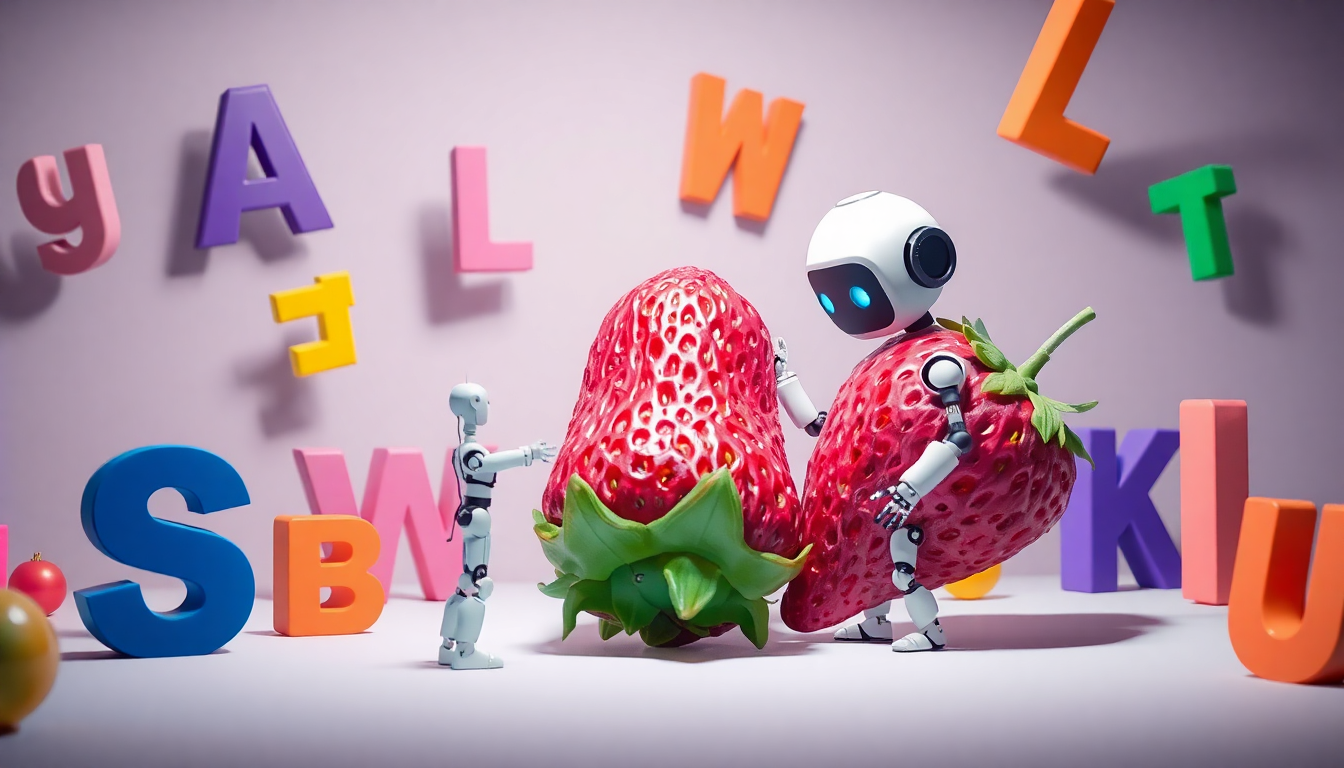In a world increasingly filled with devices that communicate with each other in real-time—the Internet of Things (IoT)—the sheer volume of data generated is nothing short of staggering. Traditional data storage methods are crumbling under the weight of this digital avalanche, raising the urgent need for innovative solutions. Enter SemAI, a groundbreaking paradigm that combines the power of Semantic Artificial Intelligence with DNA storage, promising a revolution in how we think about data storage and management.
The Explosive Growth of IoT Data
Imagine a world where your fridge sends you a text when you’re out of milk, your thermostat adjusts based on your preferences, and your car communicates with traffic lights to optimize your commute. While this scenario may sound like something out of a sci-fi movie, it's very much a reality today.
The Data Deluge
Every day, billions of connected devices generate mountains of data. The challenge? This data must be efficiently integrated, stored, processed, and utilized. The primary hurdle lies in extracting valuable information from this vast ocean of data, especially when it comes to ensuring data persistence and accessibility.
Traditional storage solutions—be it magnetic, optical, or solid-state—are running into a slew of limitations, such as:
- Power Consumption: As data centers consume more energy, the environmental impact becomes increasingly concerning.
- Size and Scalability: Traditional media can only store a finite amount of data, requiring constant upgrades and maintenance.
- Longevity: Data stored on conventional media degrades over time, necessitating frequent migrations to new formats.
Why DNA Storage?
DNA storage is not merely a novelty; it’s a potential game-changer. With a staggering data density that can reach up to 10^19 bits/cm³—six orders of magnitude greater than traditional media—DNA can hold vast amounts of data in a surprisingly compact form. Furthermore, DNA can last for millennia, making it an ideal medium for cold storage. Despite the current challenges of high read/write costs and slow speeds, DNA is increasingly being recognized as a leading contender for future storage needs.
Key Advantages of DNA Storage:
| Advantage | Description |
|---|---|
| Ultra-High Storage Density | Can store data at a density unmatched by traditional methods. |
| Extremely Long Lifespan | Data can persist for thousands of years without degradation. |
| Low Maintenance Costs | Requires significantly less energy and resources compared to traditional media. |
With the advent of advanced DNA synthesis and sequencing technologies, the feasibility of DNA storage is closer than ever. Numerous successful experiments, such as encoding entire movies and data in bacterial DNA, have sparked renewed interest in this field.
Introducing SemAI-DNA: A Semantic Approach to DNA Storage
In response to the challenges posed by the burgeoning IoT landscape, researchers have developed a Semantic Artificial Intelligence-enhanced DNA storage (SemAI-DNA) paradigm. This innovative approach distinguishes itself from existing DNA storage methods through two major advancements:
-
Semantic Extraction Module: By embedding a semantic extraction module at the encoding stage, SemAI-DNA meticulously encodes and stores nuanced semantic information, thereby ensuring that data isn't just stored but is meaningful and useful.
-
Multi-Reads Filtering Model: At the decoding end, SemAI-DNA employs a multi-reads filtering model. This takes advantage of DNA's natural multi-copy tendency to improve fault tolerance, ensuring data integrity even in the face of errors.
How SemAI-DNA Works
The process of encoding and storing data in DNA involves several critical steps, ensuring both efficiency and reliability.
1. Semantic Image Extraction
The first step in the SemAI-DNA process is semantic image extraction, which uses large AI models to identify and extract meaningful segments from images. By focusing on relevant data and eliminating redundancies, the amount of information that needs to be stored is drastically reduced.
2. Encoding
Once semantic segments are identified, they are converted into DNA sequences. Each base in DNA (A, C, G, T) is mapped to a numerical representation (0, 1, 2, 3), creating a unique sequence that represents the extracted semantic information. This allows for efficient storage and retrieval.
3. Multi-Reads Screening
Given the propensity for errors during DNA synthesis and sequencing, the multi-reads screening process becomes crucial. It assesses multiple copies of DNA sequences, filtering out those that are less reliable. This way, only the most accurate representations are used for decoding, enhancing the overall reliability of the stored data.
4. Decoding
The final step is decoding the DNA sequences back into usable data. This involves advanced algorithms that analyze the sequences, reconstruct the images, and ensure that the semantic information is preserved throughout the process.
The Impact of SemAI-DNA on Data Storage
SemAI-DNA is more than just an evolution in data storage; it's a paradigm shift that aligns with the future of IoT.
Addressing Current Challenges
With the rise of IoT, the volume and variety of data being generated necessitate innovative solutions that can efficiently manage this deluge. SemAI-DNA addresses several key challenges:
- Scalability: By utilizing the ultra-high density of DNA storage, SemAI-DNA can scale to accommodate the massive influx of data generated by IoT devices.
- Data Integrity: The multi-reads filtering model significantly enhances fault tolerance, ensuring that data remains intact despite potential errors during synthesis and sequencing.
- Semantic Relevance: By focusing on semantic information rather than raw data, SemAI-DNA ensures that the stored information is meaningful and easily accessible.
A Potential Game-Changer for Various Sectors
The implications of SemAI-DNA extend across various sectors, including:
- Healthcare: With the ability to store vast amounts of patient data securely and sustainably, DNA storage could revolutionize how medical records are maintained.
- Environmental Monitoring: As IoT devices are increasingly used for monitoring climate change and pollution, SemAI-DNA could offer a sustainable solution for storing large datasets.
- Smart Cities: The ability to manage and store data from a myriad of sensors can facilitate the development of smarter, more efficient urban environments.
The Road Ahead: Future Trends in DNA Storage
As we look to the future, the potential applications of SemAI-DNA are limited only by our imagination. Here are a few areas where further research could lead to exciting advancements:
Expanding Data Types
While SemAI-DNA currently excels in storing images, there’s a significant opportunity to extend its capabilities to other data types, such as text and video. This would open up a plethora of applications, from preserving historical records to securely storing multimedia content.
Improving Efficiency
With advancements in DNA synthesis technologies, the speed and cost of encoding and decoding data are likely to improve, making DNA storage even more viable as a mainstream solution.
Enhancing Security
As concerns about data privacy continue to grow, the use of DNA as a storage medium offers a unique opportunity to enhance security. The inherent complexity and biological nature of DNA could make it an ideal candidate for storing sensitive information in a way that is both secure and sustainable.
Embracing the Future with SemAI-DNA
The introduction of SemAI-DNA is a watershed moment in the realm of data storage, offering a sustainable solution to the challenges posed by the Internet of Things. By leveraging semantic extraction and the unique properties of DNA, SemAI-DNA is set to redefine our approach to data management, making it not only efficient but also meaningful.
Final Thoughts
As we stand on the brink of this new era in data storage, it’s crucial to consider how we can harness these technologies to benefit society as a whole. Are we ready to embrace the potential of DNA storage, or will we let it slip through our fingers like so much data in the wind?
Join the conversation! What are your thoughts on the future of data storage? Do you think SemAI-DNA will change the game for IoT data management?
Become part of the iNthacity community, apply to become permanent residents or citizens of the "Shining City on the Web", and let us know your thoughts in the comments below!



















Post Comment
You must be logged in to post a comment.